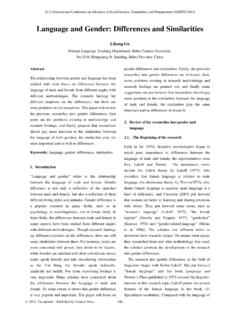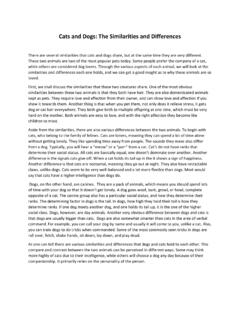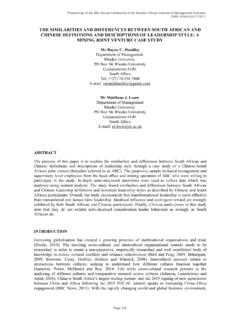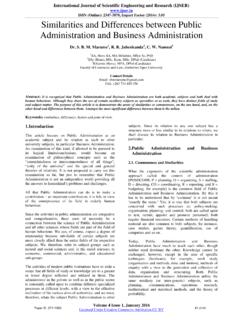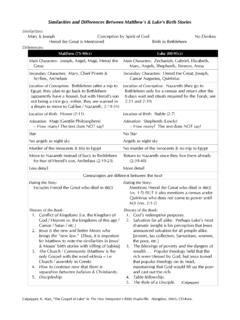Transcription of Main Differences and Similarities between MLA and APA
1 Main Differences and Similarities between MLA and APA Type MLA Format APA Format Date: The date follows the publisher in the citation and is not in parentheses. The date follows the author and is in parentheses. Author s Name: The author s full name (first and last) is spelled out. The author s last name is spelled out and the first name is reduced to initials. Capitalization: All major words in the title are capitalized and the title is underlined. Only the first word of the title, the first word of a subtitle, and any proper nouns (like names) are capitalized. Everything else is lowercase. Also, the title is written in italics. Source Page: The source page is called a Works Cited . The source page is called a References . In-Text Citations: MLA uses the last name of the author and the page number. APA uses the last name of the author and the date. MLA does not uses commas to separate the material, or p. pp. before the page numbers. APA does use commas and, if a page is mentioned, uses p.
2 And pp. MLA Similarities APA Typically used in the Humanities ( : English, Theatre, Art) The paper is double spaced, as well as the reference or works cited page. The citation has a hanging indent. Typically used in the social sciences ( : Psychology, Sociology, Social Work) works cited page to cite sources at the end of the work All information used in the paper must be in the reference page or works cited. references page to cite sources at the end of the work Works cited is cited last name, first name (Bird, Big) Any information that is not your own needs to be cited Works cited is last name, first initial (Bird, B.) When information is cited and the author s name is listed within the sentence, place the page number found at the end. {According to Big Bird, writing centers are awesome (22). } Both use parenthetical citations within the body of the paper. (Bird, 2010) or (Bird 22) When information is cited and author s name is listed within the sentence, place the year the material was published.
3 {Big Bird (2010) believes that writing centers are awesome.} When information is cited and the author s name is not listed, place the author s last name and the page number at the end. {Writing centers are awesome (Bird 22).} Citations are listed alphabetically on the references or works cited page When information is cited and the author s name is not listed, place the author s last name and the year the material was published. {Writing centers are awesome (Bird, 2010). } Quotes 4 lines or longer are blocked, meaning indented 2 tabs over Quotes are integrated smoothly and with transitions. (For a handout on transitions, visit the UWC!) Quotes 40 words or more are indented one tab (or 5 spaces)
